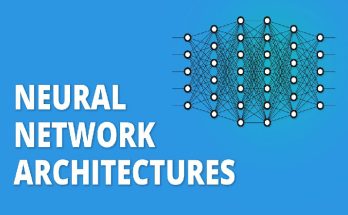The Secret Life of a Skeleton at a Computer: A Day in the Life
In the world of the supernatural, there are many mysteries and enigmas that capture our imagination. One such mystery is the concept of a skeleton working at a computer. It is a peculiar image that sparks curiosity and intrigue. How does a skeleton operate a computer? What is their daily routine like? In this article, we will delve into the fascinating world of a Skeleton at a Computer and explore the unique challenges and benefits they face in this unconventional work environment.

The Daily Routine of a Skeleton at a Computer
A typical day for a skeleton working at a computer is not too different from that of a human worker. They start their day by sitting down at their desk, adjusting their bony fingers on the keyboard, and powering up their computer. They spend their day typing away, clicking the mouse, and navigating through various applications and programs.
However, there are some notable differences between a skeleton and a human worker. For one, skeletons do not require breaks for meals or restroom visits. They do not experience hunger or fatigue, allowing them to work tirelessly for extended periods. Additionally, skeletons do not require sleep, which means they can work around the clock if needed.
The Anatomy of a Skeleton: How it Works at a Computer
The unique anatomy of a skeleton allows them to work at a computer in ways that humans cannot. With their lack of flesh and muscle, skeletons have a lightweight and flexible structure that enables them to maneuver easily around the desk and reach for objects without any hindrance. Their bony fingers are perfectly suited for typing on a keyboard, and their lack of soft tissue eliminates the risk of developing carpal tunnel syndrome or other repetitive strain injuries.
However, there are also disadvantages to having a skeletal structure when working at a computer. Without muscles to support their posture, skeletons may struggle with maintaining an ergonomic position for extended periods. This can lead to discomfort and potential long-term health issues such as back pain and spinal misalignment. Additionally, the lack of cushioning from flesh and muscle can make sitting for long periods uncomfortable, as the bones may press against hard surfaces.
The Challenges of Being a Skeleton at a Computer
While skeletons have certain advantages when working at a computer, they also face unique challenges. One of the main challenges is ergonomics. Without muscles to support their posture, skeletons may find it difficult to maintain a neutral spine position and may experience discomfort or pain in their back, neck, and shoulders. They may need to invest in specialized ergonomic equipment, such as adjustable chairs and keyboards, to alleviate these issues.
Another challenge is fatigue. While skeletons do not experience physical fatigue like humans do, they may still face mental fatigue from prolonged periods of concentration and focus. This can affect their productivity and overall well-being. Additionally, skeletons may face physical limitations due to their lack of muscles. They may struggle with tasks that require strength or dexterity, such as lifting heavy objects or performing intricate tasks that require fine motor skills.
The Benefits of Being a Skeleton at a Computer
Despite the challenges they face, skeletons also enjoy several benefits when working at a computer. One of the main advantages is durability. Unlike humans, skeletons do not age or deteriorate over time. They do not experience physical ailments or degenerative conditions that can hinder their ability to work. This means that skeletons can continue working at a computer for an indefinite period without the need for medical leave or retirement.
Flexibility is another advantage of having a skeletal structure when working at a computer. Skeletons can easily adapt to different work environments and can work in cramped spaces or unconventional positions without any discomfort. Their lightweight structure allows them to move quickly and efficiently, making them highly adaptable to various work situations.
The Social Life of a Skeleton at a Computer
While skeletons may not have the same social interactions as humans, they can still engage in socialization to some extent. They may communicate with colleagues and clients through email, instant messaging, or video conferencing. They can participate in virtual meetings and collaborate on projects with their team members. However, the lack of a physical presence may limit their ability to form personal connections and engage in casual conversations that often occur in a traditional office setting.
The Health Risks of Being a Skeleton at a Computer
Working at a computer for extended periods can pose health risks for skeletons, just as it does for humans. One of the main risks is the development of repetitive strain injuries (RSIs). Skeletons may experience discomfort or pain in their fingers, wrists, and arms due to repetitive movements such as typing and clicking the mouse. They may need to take regular breaks and perform stretching exercises to prevent or alleviate these issues.
Eye strain is another potential health risk for skeletons working at a computer. Staring at a screen for long periods can cause dry eyes, blurred vision, and headaches. Skeletons may need to follow the 20-20-20 rule, which involves looking away from the screen every 20 minutes and focusing on an object 20 feet away for 20 seconds. Additionally, using proper lighting and adjusting the screen brightness can help reduce eye strain.
The Future of Skeletons at Computers: Advancements and Innovations
As technology continues to advance, there are potential advancements and innovations that could improve the working conditions for skeletons at computers. One such advancement is the development of ergonomic equipment specifically designed for skeletons. This could include chairs with adjustable backrests and lumbar support that cater to the unique needs of a skeletal structure.
Another potential innovation is the integration of artificial intelligence (AI) into computer systems. AI could analyze a skeleton’s posture and provide real-time feedback on ergonomics, reminding them to adjust their position or take breaks when needed. This could help prevent discomfort and reduce the risk of long-term health issues.
The Psychological Impact of Being a Skeleton at a Computer
Working as a Skeleton at a Computer can have a significant psychological impact. One of the main challenges is the potential for isolation. Without a physical presence, skeletons may feel disconnected from their colleagues and the outside world. They may miss out on social interactions and the sense of belonging that comes with working in a traditional office environment.
Identity and self-esteem can also be affected. Skeletons may struggle with their sense of self and their place in society. They may face stigma or discrimination due to their unconventional appearance, which can impact their self-confidence and overall well-being. It is important for organizations to foster an inclusive and supportive work environment that values diversity and promotes acceptance.
Conclusion: The Fascinating Life of a Skeleton at a Computer
The world of a skeleton working at a computer is a fascinating one. Despite the challenges they face, skeletons possess unique advantages that allow them to excel in this unconventional work environment. From their lightweight and flexible structure to their durability and adaptability, skeletons bring a fresh perspective to the world of work.
While there are potential health risks and psychological impacts associated with being a Skeleton at a Computer, advancements in technology and a supportive work environment can help mitigate these challenges. As we continue to explore the mysteries of the supernatural, the concept of a skeleton working at a computer will undoubtedly continue to captivate our imagination and spark curiosity for years to come.



